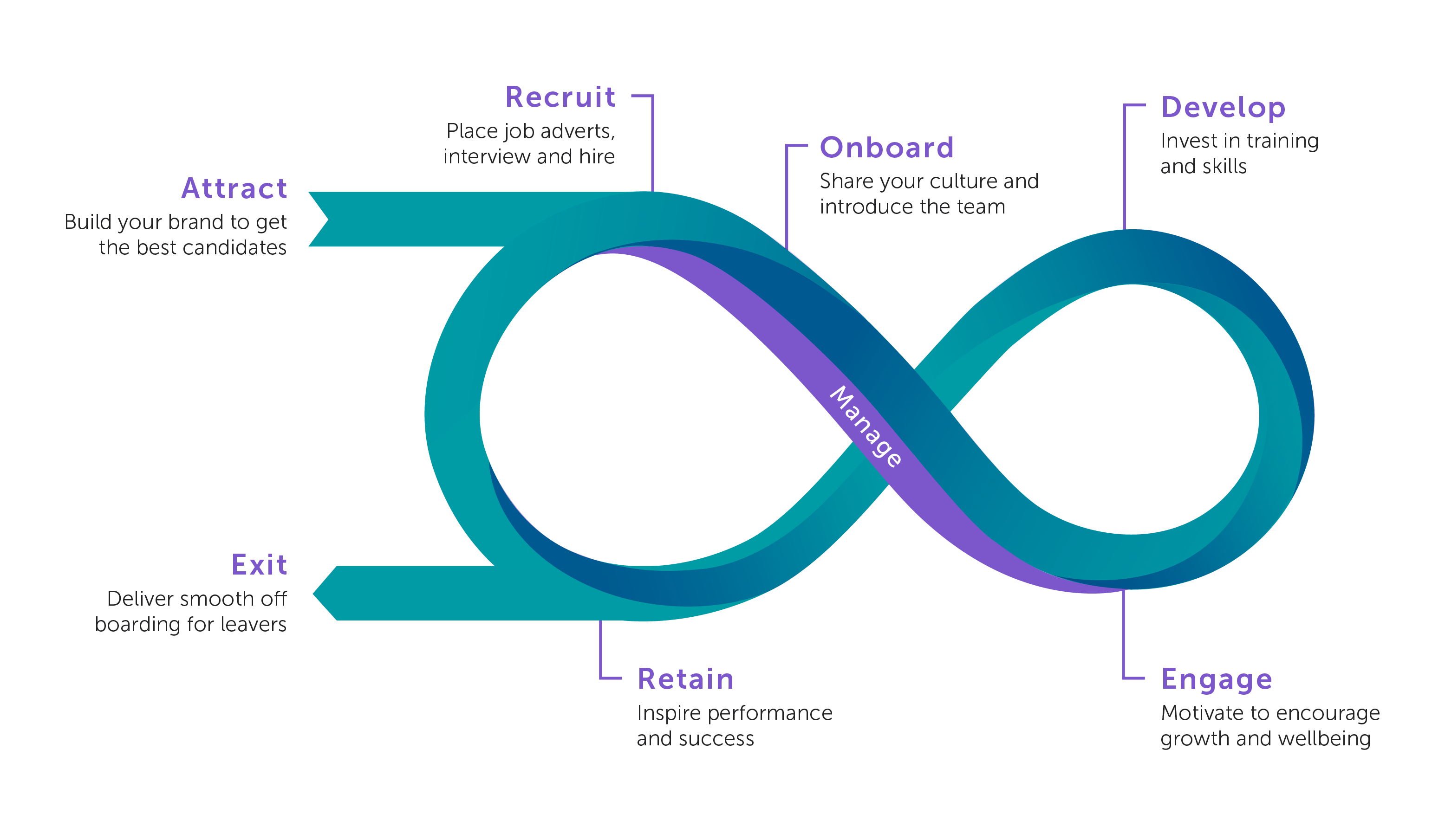18th October 2024
Why a focus on attraction, retention and development is key to securing a talented workforce
In the aftermath of recent political changes, attracting top talent, fostering long-term commitment, and nurturing professional growth have become paramount for government bodies seeking to enhance their services and meet evolving community needs, writes Kirsty Fowler, Executive Director of People and Workforce at Civica.
This article covers:
-
Why the traditional linear employee lifecycle model is outdated and how a more dynamic, bi-directional approach benefits organisations
-
How public sector organisations can focus on attraction, retention, and development to compete for talent effectively
-
The crucial role of integrated technology solutions in modern workforce management and employee support.
The ballots have been counted, and a new government is taking shape. Yet for public sector organisations across the UK, one critical challenge remains unchanged: managing, engaging, and retaining their workforce effectively in an increasingly competitive labour market.
As we stand at this crossroads, traditional approaches to workforce management are no longer fit for purpose. The public sector must embrace innovation and adapt to employees' evolving needs to deliver the high-quality services our communities deserve.
Changing employee expectations
For decades, if not centuries, we've viewed the employee lifecycle as a linear journey: join, develop, leave. This model needs to capture the complex reality of modern working lives. Today's employees expect more than just a paycheck; they seek purpose, growth, and support through life's ups and downs.
The coronavirus pandemic accelerated this shift, tipping the balance of power towards employees. Public sector organisations must recognise that work isn't separate from personal life – it's an integral part of it. This means acknowledging and supporting employees through significant life events, whether joyous or challenging.
Consider this: when an employee becomes a parent, faces a bereavement, or navigates a health crisis, their ability to contribute fully at work may be compromised. Forward-thinking public sector employers are realising that supporting staff through these moments isn't just compassionate but a strategic imperative for maintaining engagement and productivity.
An engagement imperative
Gallup's latest State of the Global Workplace report, published in June, paints a sobering picture: only 23% of the global workforce is engaged. The best-practice organisations have an engagement rate of 70%. Addressing this engagement crisis is paramount for the public sector, which often struggles to compete with private sector salaries.
The solution lies in reimagining the employee lifecycle as an "infinity loop" rather than a linear progression. This model recognises that employees may move through various roles, develop new skills, and experience personal milestones throughout their tenure. Public sector organisations can foster deeper engagement and loyalty by supporting this fluid journey.

Attraction, retention, development
As we look to the future, public sector workforce strategies must focus on three key areas. These are as follows:
- Attraction
While unable to match private sector salaries, public organisations can leverage their unique value proposition. This includes emphasising purpose-driven work, comprehensive benefits packages, and opportunities for genuine impact. - Retention
Keeping talented staff requires more than just competitive pay. It demands a culture of support, recognition, and continuous growth opportunities. Implementing robust employee engagement and occupational health programmes and responsive employee relations systems can significantly boost retention rates. - Development
The skills gap is among the most pressing challenges facing the public sector. Organisations must invest in identifying skill deficits and creating pathways for employees to upskill and reskill throughout their careers.
Leveraging technology for workforce transformation
Public sector organisations need integrated, data-driven solutions to address these challenges effectively. Unified HR and payroll systems, such as Civica's HR and Payroll suite, can eliminate data silos, streamline processes, and provide crucial insights for strategic decision-making.
Moreover, advanced case management tools like Civica Case Management can ensure consistent, fair handling of employee relations issues, reducing the risk of costly tribunals and fostering a culture of trust. When combined with proactive occupational health initiatives, supported by solutions like Civica Occupational Health software, these systems create a comprehensive ecosystem that supports employees at every stage of their journey.
Financial wellbeing
One often overlooked area where the public sector can gain an advantage is financial wellbeing. While base salaries may lag behind the private sector, innovative benefits packages can make a significant difference. This could include partnerships with financial education providers, discount schemes, and tools that help employees maximise their earnings through smart financial planning.
By taking a holistic view of employee compensation – considering not just salary but total rewards, including financial education and support – public sector organisations can create a more compelling offer for both current and prospective employees. Civica People Hub HR, for instance, offers integrated financial wellbeing support, giving employees 24/7 access to their data and the tools to manage their financial health effectively.
A data-driven approach
In today's digital age, data is king. Public sector organisations must harness the power of workforce analytics to make informed decisions about their people strategies. This means moving beyond basic reporting to predictive analytics that can forecast talent needs, identify flight risks, and pinpoint areas for intervention.
Civica's HR and Payroll solutions offer reporting and analytics capabilities, enabling organisations to gain deep insights into their workforce. By leveraging these tools, public sector leaders can make data-driven decisions that improve employee satisfaction, reduce turnover, and enhance service delivery.
Flexibility and adaptability
The past few years have taught us that the ability to adapt quickly to changing circumstances is crucial. Public sector organisations must build flexibility into workforce management strategies, allowing for rapid pivots in response to external pressures or internal needs.
This flexibility extends to work arrangements as well. While the nature of many public sector roles requires on-site presence, offering flexible and remote working options can significantly boost attraction and retention. Civica's solutions are designed with this flexibility in mind, offering cloud-based access that supports diverse working arrangements.
Future workforce management
As a new government sets its agenda, public sector organisations have a unique opportunity to reset and reimagine their approach to workforce management. By embracing a more dynamic, employee-centric model, investing in integrated technology solutions, and focusing on holistic well-being, the public sector can position itself as an employer of choice.
The challenges are significant, but so are the opportunities. By putting people at the heart of workforce strategies, supported by cutting-edge technology like Civica's suite of HR solutions, public sector organisations can weather the storms of change and emerge stronger, more resilient, and better equipped to serve their communities, ultimately.
Employee relations suite
Explore how Civica Case Management, Civica People Hub HR and Civica Occupational Health combine to form the employee relations suite – connected solutions that drive better employee experiences.
Find out more